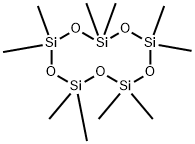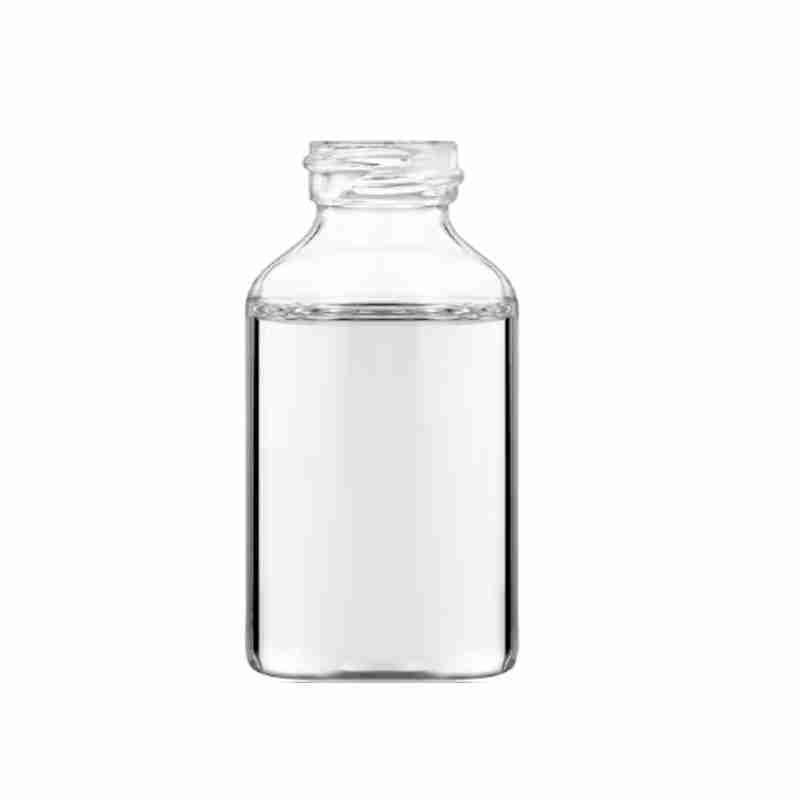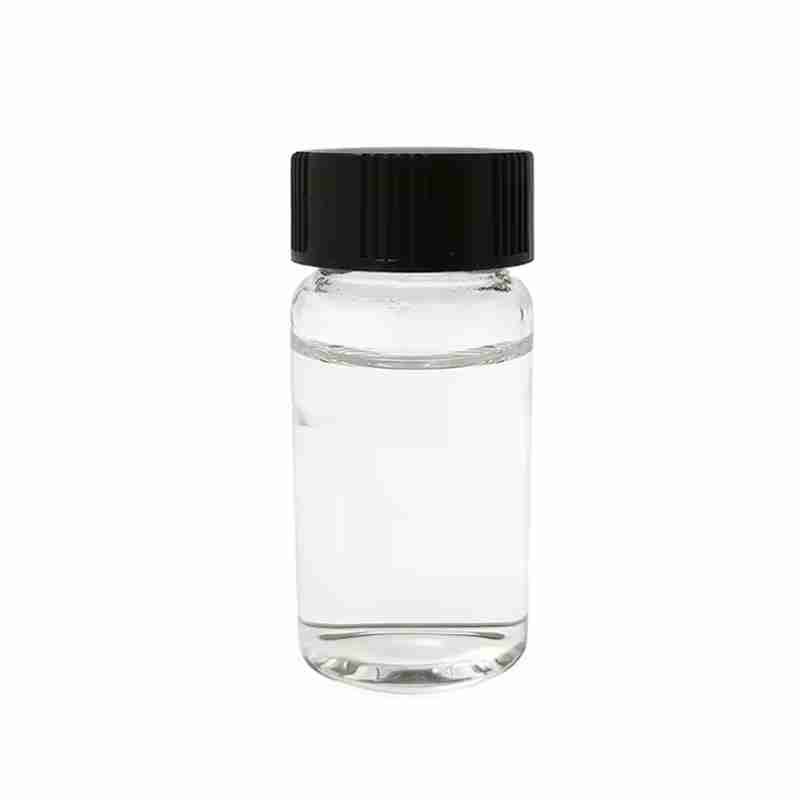Decamethylcyclopentasiloxane CAS #541-02-6
Decamethylcyclopentasiloxane (D 5) is a silicone compound with the molecular formula of [(CH 3) 2SiO] 5. It is a colorless and tasteless liquid with slight volatility.
Cyclopentasiloxane CAS No. 541-02-6, chemical formula C10H30O5Si5, molecular weight 370.77000, Chinese alias decamethylcyclopentasiloxane, liquid, boiling point 90 ??C10 mm Hg(lit.), flash point 162 ??F, density 0.958 g/mL at 25 ??C(lit.), refractive index n20/D 1.396(lit.). Decamethylcyclopentasiloxane (cyclopentasiloxane) is a colorless, odorless, volatile liquid cyclic siloxane, safe and environmentally friendly, and has been widely used in health and beauty products , such as deodorants, antiperspirants, cosmetics, shampoos, body lotions, etc. Good compatibility with alcohol and most other cosmetic solvents.
发送询盘
Decamethylcyclopentasiloxane CAS #541-02-6
| Decamethylcyclopentasiloxane Basic information |
| Product Name: | Decamethylcyclopentasiloxane |
| Synonyms: | CD3770;cyclicdimethylsiloxanepentamer;D3770;siliconsf1202;vs7158;CYCLIC PENTAMER-D5;DECAMETHYLCYCLOPENTASILOXANE;Decamethylcyclopentasiloxane (cyclic monomer)Cyclic Pentamer-D5 |
| CAS: | 541-02-6 |
| MF: | C10H30O5Si5 |
| MW: | 370.77 |
| EINECS: | 208-764-9 |
| Product Categories: | Organometallic Reagents;Organosilicon;Si (Classes of Silicon Compounds);Si-O Compounds;Heterocycles;Intermediates & Fine Chemicals;Pharmaceuticals;Organics;Silicone Series;Siloxanes;541-02-6 |
| Mol File: | 541-02-6.mol |
 |
|
| Decamethylcyclopentasiloxane Chemical Properties |
| Melting point | -44??C |
| Boiling point | 90 ??C/10 mmHg (lit.) |
| density | 0.958 g/mL at 25 ??C (lit.) |
| vapor pressure | 33.2Pa at 25?? |
| refractive index | n20/D?1.396(lit.) |
| Fp | 162???F |
| storage temp. | 2-8??C |
| solubility | <0.0001g/l (calculated) |
| form | Liquid |
| color | Colorless |
| Specific Gravity | 0.959 |
| explosive limit | 0.52-7%(V) |
| Water Solubility | Immiscible with water. |
| Hydrolytic Sensitivity | 1: no significant reaction with aqueous systems |
| Merck | 14,2848 |
| BRN | 1800166 |
| Dielectric constant | 2.5??20?棩 |
| Stability: | Stable. Incompatible with strong oxidizing agents. |
| InChIKey | XMSXQFUHVRWGNA-UHFFFAOYSA-N |
| LogP | 8.07 at 24.6?? |
| CAS DataBase Reference | 541-02-6(CAS DataBase Reference) |
| NIST Chemistry Reference | Decamethylcyclopentasiloxane(541-02-6) |
| EPA Substance Registry System | Decamethylcyclopentasiloxane (541-02-6) |
- 2
- 2-diallylpent-4-en-1-amine
- 4
- 95-16-9
- Ammonium sulfamate
- Benzothiazole
- cas:67889-00-3ح2
- cas:83524-75-8 | pigment black 32
- cas:928836-00-4 | 2
- cas:932745-70-5 | 4
- Chemical Minerals
- Coconut diethanolamide
- Daily Chemicals
- discount
- for sale
- General pvc resin
- hexyl D-glucoside
- in stock
- Lauramidopropyl betaine
- LAURIC ACID MONOETHANOLAMIDE
- Petroleum Additives
- Plasticiser
- Ploymers
- price
- PVC
- quotation
- Raw Materal
- Remove term: Petroleum Additives Petroleum Additive
- SODIUM ETHYL 2-SULFOLAURATE
Related Products
Chemical Name: Dehydrocholic acid
Synonyms: Acide dehydrocholique; Triketocholanic acid
CAS No.: 81-23-2
Molecular Formula: C24H34O5
Molecular Weight: 402.53
Appearance: Powder
Chemical Name: Arabic gum
CAS No.: 9000-01-5
Appearance: powder
Chemical Name: 3-Hydroxybutyric acid
CAS No.: 625-71-8
Molecular Formula: C4H8O3
Molecular Weight: 104.1
Appearance: White powder
Chemical Name: Ashwagandha Extract
Synonyms: Withania somnifera, ext.; Withania Somnefera Extract
CAS: 90147-43-6
Appearance: Brown
Silicone oil, known for its chemical designation as dimethicone or polydimethylsiloxane, is a synthetic polymer with a backbone of alternating silicon and oxygen atoms, creating a highly versatile and stable compound. It is renowned for its exceptional lubricating properties, heat resistance, and non-toxic nature, making it a staple in various industries, including cosmetics, automotive, and aerospace.
This hydrophobic, non-volatile oil is valued for its ability to provide a smooth, non-greasy feel and to form stable emulsions with other ingredients. In personal care products, silicone oil is used to impart a silky texture, reduce friction on the skin, and create a protective barrier against environmental stressors without clogging pores.
Silicone oil’s chemical inertness and resistance to oxidation contribute to its long shelf life and stability in formulations. It is also appreciated for its compatibility with a wide range of substances, allowing for the creation of multifunctional products.
In summary, silicone oil is a reliable and multifaceted ingredient, offering a combination of performance, safety, and sensory benefits. Its use in a variety of applications reflects its versatility and enduring appeal in the marketplace.
Octocrylene is an organic compound widely recognized for its potent UV-filtering properties, making it an essential ingredient in sunscreens and other skincare products designed to protect the skin from harmful ultraviolet radiation. With the chemical name 2-(4-Methylbenzyl)-2H-benzotriazole-5-methyl, octocrylene is a stable and photostable molecule that provides broad-spectrum protection against both UVA and UVB rays.
This oil-soluble chemical is valued for its ability to absorb UV radiation effectively, converting it into heat without causing skin irritation or staining clothes. Octocrylene is often used in combination with other UV filters to enhance the sun protection factor (SPF) of formulations, ensuring a balanced and comprehensive defense against sun damage.
As a lipophilic compound, octocrylene is compatible with various cosmetic and dermatological formulations, contributing to the development of lightweight, non-greasy sunscreens. Its chemical structure allows for a high degree of safety and efficacy, making it suitable for a wide range of skin types, including sensitive skin.
In summary, octocrylene is a reliable and efficient UV filter, pivotal in the formulation of modern sunscreens that offer advanced protection against the sun’s harmful effects while maintaining skin comfort and product aesthetics.
Butylated Hydroxytoluene (BHT) is a synthetic phenolic antioxidant commonly added to foods, cosmetics, and packaging to prevent the oxidation of fats and oils, thereby extending their shelf life. It is also used as a preservative in a variety of products, including rubber, petroleum products, and animal feed. BHT is recognized for its effectiveness in maintaining nutrient levels, color, flavor, and odor in food products . It is known to have a melting point of 69-71??C, a boiling point of 265??C, and is soluble in ethanol, acetone, and benzene, but not in water, glycerin, or propylene glycol . BHT is also used in some dietary supplements due to its antioxidant properties . However, it is important to handle BHT with care, as it can cause skin irritation and is considered harmful if swallowed .
Chemical Name: Imazalil Sulfate
CAS No.: 58594-72-2
Molecular Formula: C14H14Cl2N2O.H2SO4
Molecular Weight: 395.26
Appearance: Solid
Succinimide is a heterocyclic organic compound and an important industrial chemical. It serves as a key intermediate in the synthesis of various pharmaceuticals, agrochemicals, and other specialty chemicals. Known for its reactivity and versatility, succinimide is widely used in the production of succinic anhydride, a precursor to many polymers and plasticizers, highlighting its significance in the chemical industry.
Chemical Name: STODDARD SOLVENT
CAS No.: 64742-88-7
Appearance: Colorless or Light Yellow Liquid
Common English name: 5-iodo-2,3-dihydropyridazin-3-one
CAS No.: 825633-94-1
Molecular formula: C4H3IN2O
Molecular weight: 221.98
Sample: Available
Chemical Name: Potassium Castorate
CAS No.: 8013-05-6
Molecular Formula: C57H107K3O12
Molecular Weight: 1101.74718
Appearance: Yellow Liquid



















